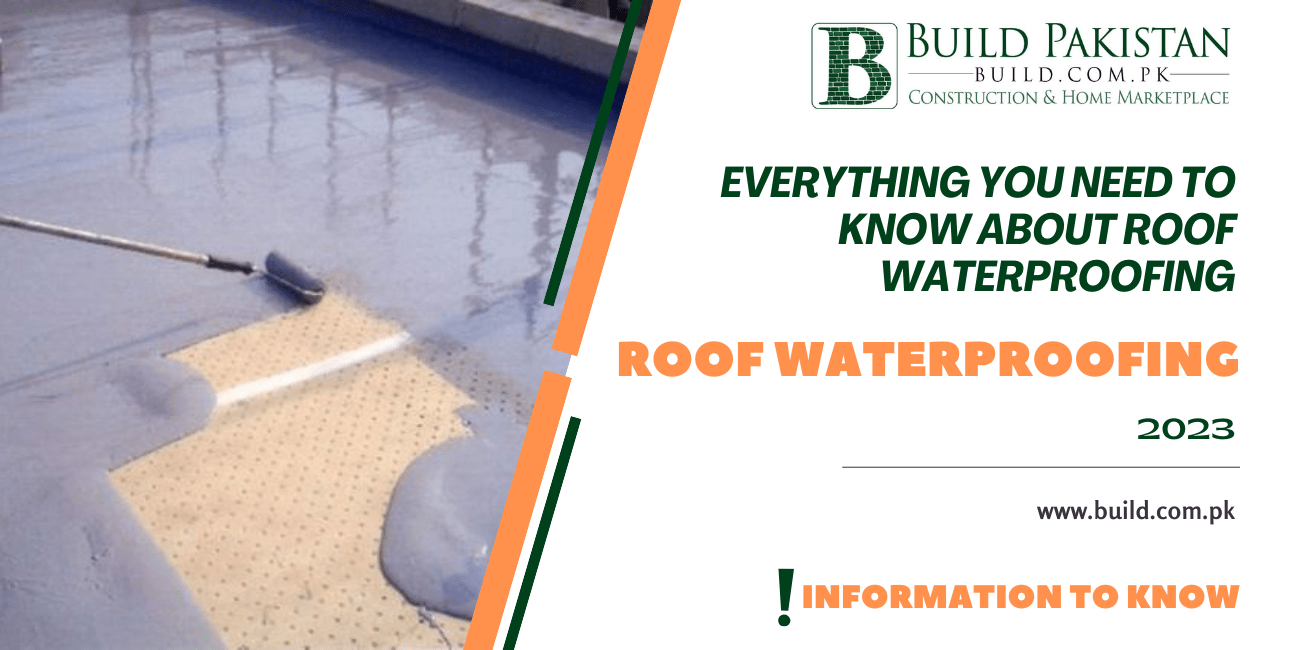Everything You Need to Know About Roof Waterproofing

Introduction:
Roof waterproofing is an essential process that every homeowner should consider to protect their home from water damage. Water damage can cause severe structural problems, resulting in costly repairs. In this blog, we will explore everything you need to know about roof waterproofing, including its benefits, the different types of waterproofing, and how to choose the right waterproofing method for your home.
Protect Your Roof from Water Damage with Effective Waterproofing
Why is Roof Waterproofing Important?
Roof waterproofing is essential because it protects your home from water damage, which can lead to structural problems and mold growth. Water damage can cause leaks, cracks, and other problems that compromise the structural integrity of your home. Waterproofing your roof can prevent water from seeping into your home, keeping it dry and free from water damage.

Types of Roof Waterproofing
Bituminous Membrane Waterproofing:
This type of waterproofing involves the application of a layer of bitumen-based waterproofing material onto the roof surface. It is effective in preventing water infiltration and is ideal for flat roofs.

Liquid Waterproofing:
Liquid waterproofing involves the application of a liquid waterproofing material onto the roof surface. It is easy to apply, cost-effective, and ideal for roofs with complex shapes and angles.

Cementitious Waterproofing:
This type of waterproofing
involves the application of a cement-based waterproofing material onto the roof
surface. It is ideal for roofs that are exposed to heavy rainfall and extreme
weather conditions.

How to Choose the Right Waterproofing Method
Choosing the right waterproofing method depends on several factors, including the type of roof, the climate, and the budget. Here are some factors to consider when choosing the right waterproofing method:
Roof Type:
Different types of roofs require different
waterproofing methods. For instance, a flat roof may require bituminous
membrane waterproofing, while a sloping roof may require liquid waterproofing.
Climate:
The climate in your area is another important factor
to consider when choosing a waterproofing method. If you live in an area that
experiences heavy rainfall, a cementitious waterproofing method may be more
suitable.
Budget:
The cost of waterproofing is another important factor to consider. Liquid waterproofing is typically less expensive than other waterproofing methods and is ideal for homeowners on a budget.

Benefits of Roof Waterproofing
Protects Your Home from Water Damage:
Roof waterproofing
protects your home from water damage, preventing costly repairs.
Increases Your Home's Lifespan:
Waterproofing your roof can
increase your home's lifespan by preventing structural problems and
deterioration.
Energy Efficiency:
Waterproofing your roof can improve your
home's energy efficiency by preventing heat loss and reducing energy bills.
How to Maintain Your Waterproofed Roof
Maintaining your
waterproofed roof is essential to ensure its effectiveness and longevity. Here
are some tips on how to maintain your waterproofed roof:
Inspect Your Roof Regularly:
Regularly inspect your roof for
any signs of damage or wear and tear.
Clean Your Roof:
Clean your roof regularly to prevent the
buildup of dirt and debris.
Repair Any Damage:
Repair any damage to your roof as soon as
possible to prevent further damage.
Conclusion:
Roof waterproofing is an essential process that
every homeowner should consider to protect their home from water damage.
Different types of waterproofing methods are available, and choosing the right
method depends on several factors










